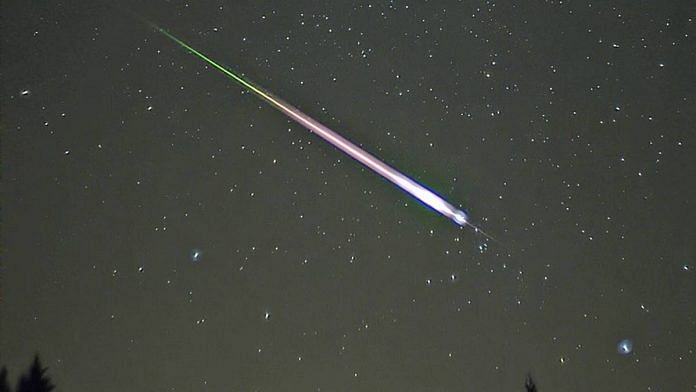Bengaluru: Every year in November, an annual meteor shower called the Leonids radiate out from the direction of the constellation of Leo in the sky. They can be seen with the naked eye when the sky is clear and there is no moonlight.
The showers run through November, starting on the 5th or 6th day every year and ending on the 30th. Each year, they also peak at the same time, on 17 November.
The meteors originate from the comet 55P/Tempel-Tuttle, which orbits the sun every 33 years and intersects the Earth’s orbit directly in its path. It leaves behind a trail every time it intersects the Earth’s orbit, once in 33 years. But the Earth passes through this trail each year as it revolves around the sun, causing meteor showers to occur.
Also read: NASA telescope may have just helped find the first planet spotted outside Milky Way
How to see the Leonids
The Leonids are best visible during their peak, which occurs this year in the early hours of 17 November. They are typically visible under clear skies and no moonlight. There will be a gibbous moon, which is darker than a full moon but larger than a half moon, at the time, making it possible for the meteor showers to be seen only after the moon sets, and before the sun rises on the morning of 17 November.
The meteors radiate out from the direction of the constellation of Leo, which is eastward. Looking directly at their source in Leo would make the meteors appear short. Thus it is advised to look away from the constellation, and over the entire area of the sky, to see the long and colourful streaks the meteors draw as they pass by. Since they radiate outward in all directions from Leo, they appear in all directions over the sky.
An average of 8 to 15 meteors are expected to be seen every hour this year. The Leonids are particularly popular for their bright and colourful streaks, as the meteors burn up in the Earth’s atmosphere.
Also read: Amazon to launch first 2 satellites of Project Kuiper for high-speed internet in 2022
Leonids through history
Leonids have been recorded through history for millennia, and were only started to be associated with a comet after the discovery of Halley’s Comet in 1758. Since the comet Tempel-Tuttle has an orbital period of 33 years, the density of material that the Earth passes through peaks every 33 years as well.
When the Earth passes through a new trail left behind by the comet that has just passed the Earth’s orbit, meteor storms occur. These are when over 1,000 or even over 100,000 meteors are observed in the skies in an hour. The most famous of these storms occurred in 1833, which revolutionised the study of meteors and comets. It is estimated that over 240,000 meteors fell over a nine-hour period that year.
In 1966, a Leonid storm saw thousands of meteors fall through Earth’s atmosphere in a matter of just 15 minutes. The last storm occurred in 2002.
The comet itself was discovered over 30 years after the spectacular storm of 1833, twice independently. Ernst Tempel discovered it in December 1865, and Horace Tuttle discovered it in January 1866. It is a small comet, and is just about 3.5 kilometres wide.
(Edited by Poulomi Banerjee)
Also read: Imagine 34 Mount Everests stacked together — that’s the depth of Jupiter’s Great Red Spot



